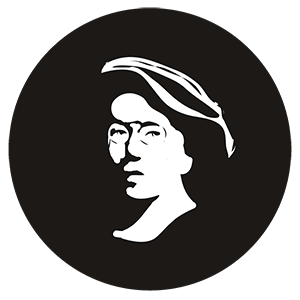POSTPONED Tony Pecinovsky presents "Let Them Tremble: Biographical Interventions Marking 100 Years of the Communist Party, USA"
This event has already happened.
Tuesday, April 7th 2020
7:00 pm
Red Emma's
Pecinovsky's book contains six capsule biographies of American left-wing thinkers."Through compelling and readable life histories, Let Them Tremble
reveals how the Communist Party, USA struggled against racism, sexism,
environmental destruction and militarism. This is essential reading..."- Andrew Zimmerman, author of The Civil War In The United States: Karl Marx and Friedrich Engels"A fine study of American left wing personalities...Highly recommended!"
- Paul Buhle, author of Marxism in the United States: A History of the American LeftChapter 1:
Arnold Johnson: A “consistent and
vigorous” defender of the Bill of Rights and the Peace Offensive
- Throughout
his political career, Johnson articulated a unique defense of the Bill of
Rights, a defense intimately intertwined with African American Civil Rights,
peace and free speech. His activities, like those of his comrades, can easily
be characterized as part of a strategic Red-Black alliance, a decades long
formal and informal collaboration that brought Black luminaries and activists into
the CPUSA’s Red orbit. This chapter centers Johnson’s defense of the Bill of
Rights as not only a fight for the legal rights of communists but also as a
fight for Civil Rights and peace, as the Party (with Johnson as head of its
Peace Commission) made considerable contributions to the 1960’s peace movement.
The chronology is the late 1940’s into the 1970’s.
Chapter 2:
Charlene Mitchell: Presidential
politics, the National Alliance and the fight against Reaganism
-
Mitchell’s
1968 presidential election campaign, the Party’s own short-comings in initiating
the campaign, the emergence of the National Alliance Against Racist and
Political Repression, and Mitchell’s analysis of the various movements that
emerged during the early Reagan Administration are discussed in this chapter.
Significant attention is given to the political context of the late 1960’s, as
the youth and student upsurge, Black Power movements and feminism all coalesced
to impress upon the Party a unique opportunity to present Mitchell as
potentially embodying a revived Communist Party, one reflective of emerging
movements. Significant attention is also given to Mitchell’s work as head of
the National Alliance and her assault in 1982. The chronology is the late
1960’s into the late 1980’s.
Chapter 3:
Gus Hall: The ‘Right to Speak,’ young
communists and strategic relationships
-
In the
early 1960’s, Hall and the CPUSA embarked on an ambitious and deliberate
campaign to rebuild their hounded and depleted ranks among youth and
students.
Far from being marginal, communists were an essential component of the
youth
and student upsurge and the free speech movements of the time,
initiating new
and important organizational formations. In all, it is estimated that
communists, like Hall, collectively spoke with at least 100,000 students
during the early 1960s, as tens of thousands organized on their
university and college campuses for the right to hear Reds speak. Hall
saw this
fight for the right to hear communists led by students as a strategic
relationship, an opportunity to rebuild and replenish the Party’s ranks
though
the Progressive Youth Organizing Committee, the W.E.B. DuBois Clubs and
the
Young Workers’ Liberation League, while shifting political discourse
away from
war in Vietnam. The continuing work of communists among youth and
students into
the 2000s after Hall’s death is also briefly discussed in this chapter.
The
chronology is the 1960’s through the 1980’s and into the early 2000’s.
Chapter 4:
Henry Winston: Sight, Vision and Black
Liberation
-
Winston’s imprisonment in 1956 is placed in political and historical context as
communists led an international campaign eventuating in his release. As
Organizational Secretary, Winston’s late 1940’s and early 1950’s analysis of
the immediate impact of the emerging Red Scare on the Party and its membership provides
a new perspective on the U.S. government’s early failure at isolating Reds.
This chapter also looks at Winston’s analysis of the 1960’s Black Freedom movements
and tactics employed by more adventurist elements. Highlighted are some of
Winston’s criticisms of the Party in the late 1970’s and early 1980’s as he
continued to articulate a “three pronged” approach to organizing well into his
last years. Throughout his life, Winston argued for a robust approach to Party
building, an approach centered on grassroots electoral work, industrial
concentration and mass struggle. To him, a wedding of these tactics generated
optimal results for Party growth and influence. The chronology is the early
1960’s into the 1970’s and 1980’s.
Chapter 5:
Judith LeBlanc: Indigenous Marxism, Changing America and United for Peace
& Justice
- Le
Blanc’s analysis of Native American oppression, from the Occupation of Wounded
Knee, through the 1980’s and into the Standing Rock movement, is discussed in
this chapter. To LeBlanc, the emphasis on Native American oppression was often
connected to the struggle for workers’ rights to form and join unions and to protect
the environment – a call decades ahead of its time. This chapter also focuses
on LeBlanc’s role in the Party’s public access TV show, Changing America, a unique attempt by communists to reach into the
then emerging demand for independent media. Throughout the early 2000s LeBlanc
also helped lead United For Peace & Justice (UFPJ), a nation-wide coalition
dedicated to building opposition to the wars in Iraq and Afghanistan. The chronology
is the late 1970’s into the 1980’s, 1990’s and 2000’s.
Chapter 6:
W. Alphaeus Hunton: The National Negro
Congress, the Council on African Affairs and Black Liberation
- Hunton’s
leadership in the National Negro Congress and the Council on African Affairs,
as well as his move to Ghana after W.E.B. Du Bois’ invitation is the focus of
this chapter. As a leading African American intellectual and organizer largely
forgotten today, Hunton was greatly admired during his time by Black luminaries
Paul Robeson and W.E.B. Du Bois. Like Robeson and Du Bois, Hunton was also a
mentor to many African American communists, including Charlene Mitchell, and
helped lay the architectural groundwork for what would later become the modern
Civil Rights Movement. Though he never held an official position within the
Party, Hunton was a key personality within various Party-led initiatives such
as the NNC, CAA and the Civil Rights Congress and as a result was hounded by the
House Un-American Activities Committee (HUAC) throughout his career. The
chronology is the late 1930’s into the 1950’s and 1960’s.
See all upcoming events
